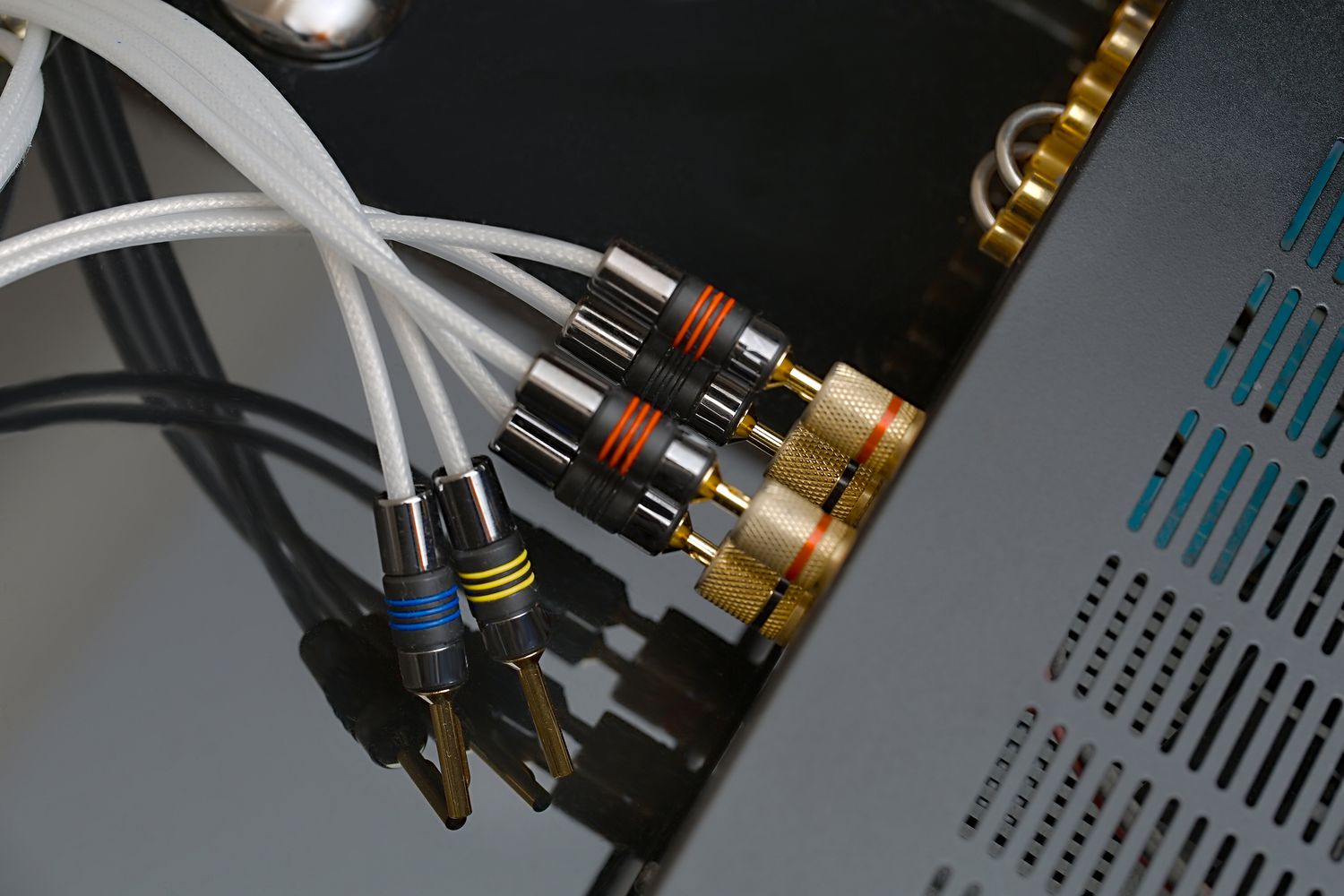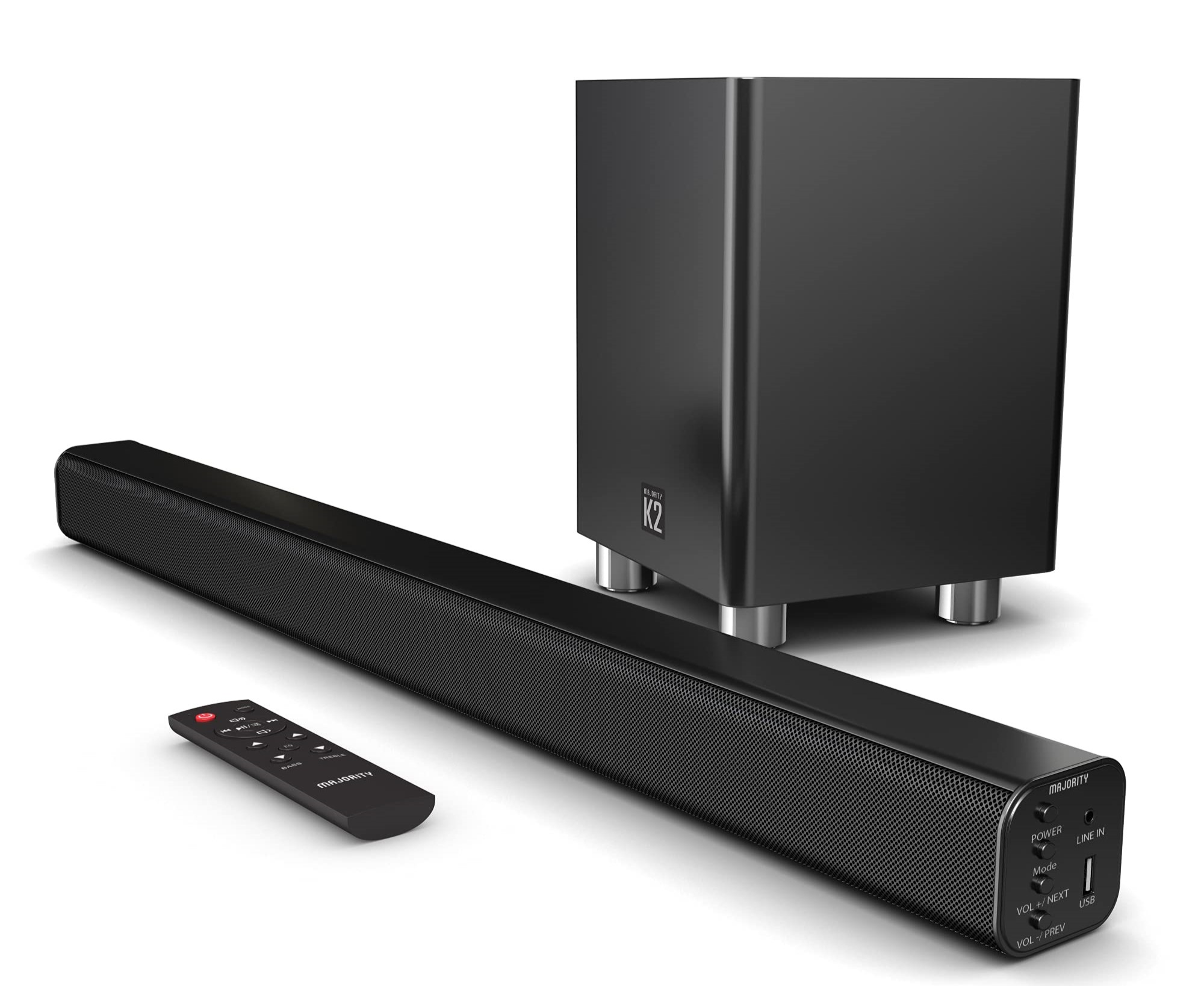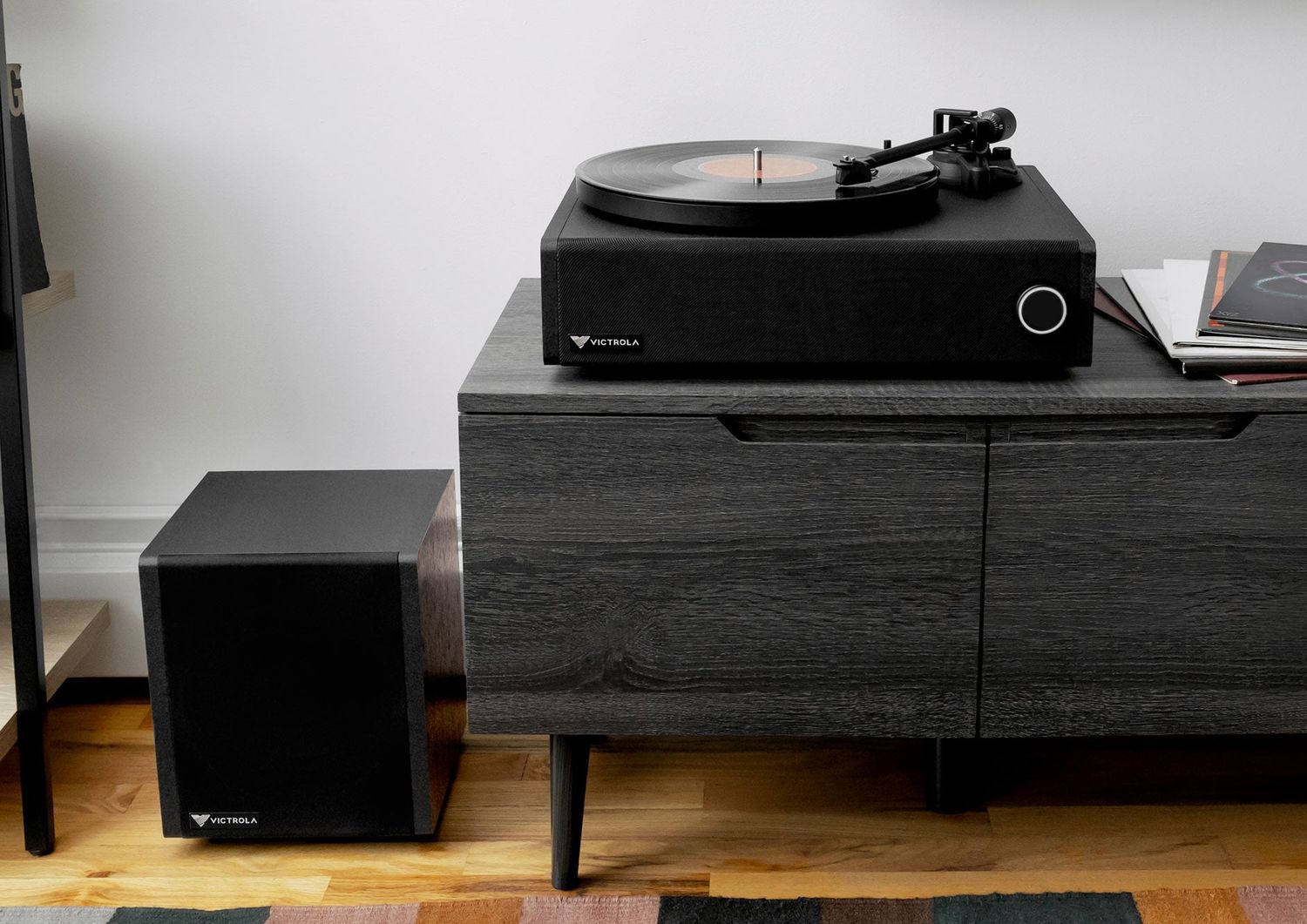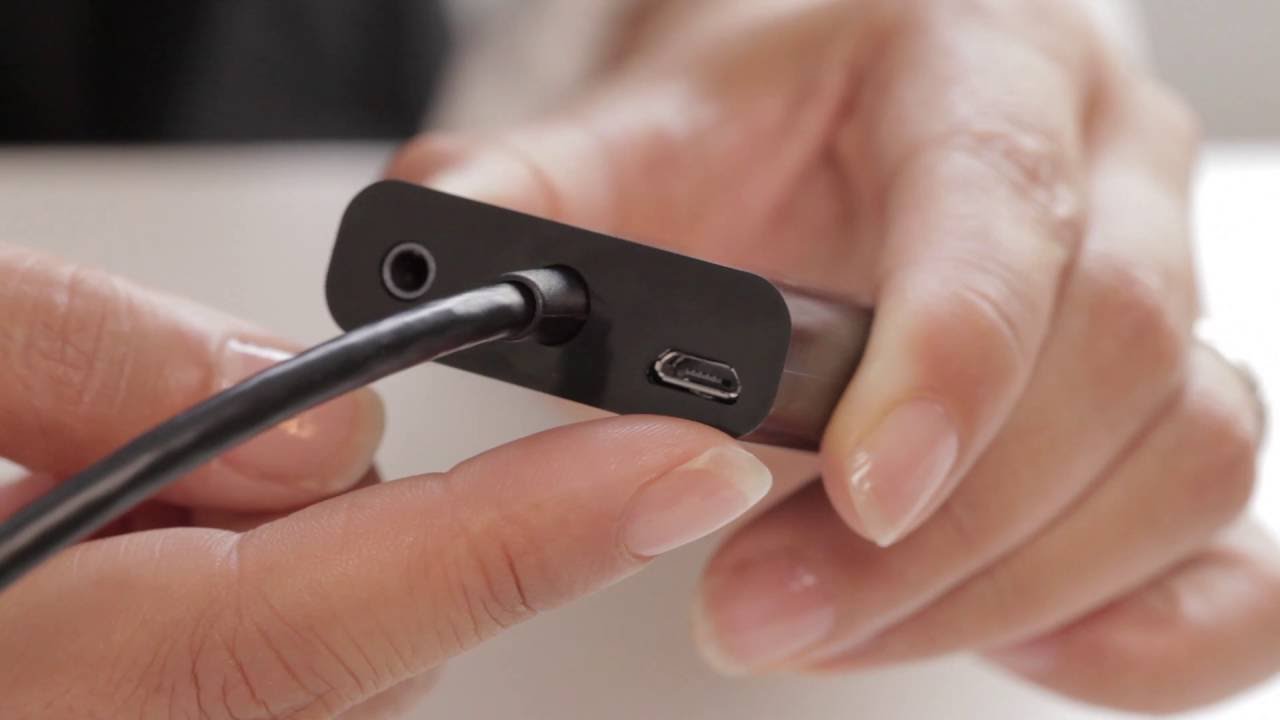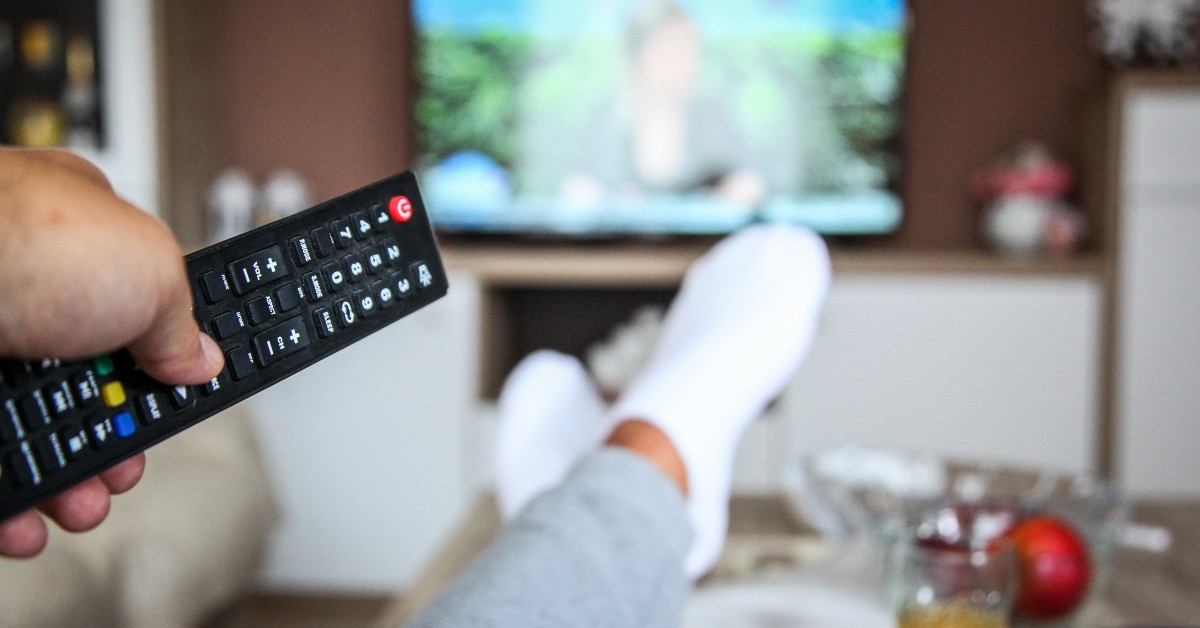Home>Production & Technology>Audio Cable>How To Connect Coaxial Audio Cable Between TV And Soundbar


Audio Cable
How To Connect Coaxial Audio Cable Between TV And Soundbar
Modified: March 8, 2024
Learn how to connect your TV and soundbar using a coaxial audio cable. Follow our step-by-step guide for a seamless audio experience.
(Many of the links in this article redirect to a specific reviewed product. Your purchase of these products through affiliate links helps to generate commission for AudioLover.com, at no extra cost. Learn more)
Table of Contents
- Introduction
- Understanding Coaxial Audio Cables
- Step 1: Gather the necessary equipment
- Step 2: Identify the coaxial audio ports on your TV and soundbar
- Step 3: Prepare the coaxial audio cable
- Step 4: Connect one end of the coaxial audio cable to the TV
- Step 5: Connect the other end of the coaxial audio cable to the soundbar
- Step 6: Test the connection and adjust audio settings
- Conclusion
Introduction
Welcome to the world of audio cables! Whether you’re a music enthusiast, an audiophile, or simply someone who enjoys immersive sound, having the right audio cables can make a significant difference in your listening experience. One commonly used type of audio cable is the coaxial audio cable.
Coaxial audio cables are designed to transmit audio signals from one device to another with high fidelity and minimal interference. They are commonly used to connect various audio equipment such as TVs, soundbars, AV receivers, and speakers. If you’re looking to connect your TV and soundbar using a coaxial audio cable, you’ve come to the right place!
In this guide, we’ll take you through a step-by-step process to help you seamlessly connect a coaxial audio cable between your TV and soundbar. We’ll cover everything from gathering the necessary equipment to testing the connection and adjusting audio settings to ensure the best possible sound quality.
Before we delve into the details, though, it’s essential to understand the benefits of using a coaxial audio cable. Unlike regular RCA cables, which can only transmit analog audio signals, coaxial cables can transmit digital audio signals as well. This means you can enjoy high-definition audio with greater clarity and precision.
So, let’s get started on your journey to better sound quality by connecting your TV and soundbar using a coaxial audio cable. With just a few simple steps, you’ll be amazed at the difference it can make in your audio experience. Shall we begin?
Understanding Coaxial Audio Cables
Before we proceed with the steps of connecting a coaxial audio cable between your TV and soundbar, it’s important to have a basic understanding of what coaxial audio cables are and how they work.
A coaxial audio cable is a type of cable that consists of a central conductor surrounded by an insulating layer, a shield, and an outer protective jacket. The central conductor carries the audio signal, while the shield helps to minimize interference from external sources.
Coaxial cables are designed to transmit audio signals over long distances without experiencing significant signal loss or degradation. This makes them ideal for connecting audio devices that are located far apart, such as a TV and a soundbar.
One of the main advantages of coaxial audio cables is their ability to transmit both analog and digital audio signals. This versatility makes them compatible with a wide range of audio devices. So, whether you have a TV with a coaxial audio output or a soundbar with a coaxial audio input, you can easily connect them using a coaxial audio cable.
When it comes to audio quality, coaxial cables offer excellent fidelity and clarity. They are capable of delivering high-definition audio without any noticeable loss of quality. This is especially beneficial for those who appreciate a rich and immersive sound experience.
Coaxial audio cables come in various lengths and thicknesses. The length of the cable you choose will depend on the distance between your TV and soundbar. It’s always a good idea to measure the distance beforehand to ensure you select the appropriate length.
Additionally, when purchasing a coaxial audio cable, look for cables that are made with high-quality materials and have proper shielding. This will help prevent interference and ensure optimal performance.
Now that you have a better understanding of coaxial audio cables, you’re ready to move on to the practical steps of connecting one between your TV and soundbar. Let’s dive in!
Step 1: Gather the necessary equipment
Before you can connect a coaxial audio cable between your TV and soundbar, you’ll need to ensure that you have all the necessary equipment. Here’s a list of items you’ll need:
- A coaxial audio cable: This is the main cable that will transmit the audio signal. Make sure to choose a high-quality cable that is the appropriate length for your setup.
- A TV with a coaxial audio output: Check your TV’s specifications to confirm whether it has a coaxial audio output. It is usually labeled as “Coaxial Out” or “Digital Audio Out”.
- A soundbar with a coaxial audio input: Similarly, verify that your soundbar has a coaxial audio input. Look for labels like “Coaxial In” or “Digital Audio In”.
- Power cables for both the TV and soundbar: Ensure that both devices are plugged into a power source.
Once you’ve gathered these items, you’re ready to move on to the next step of the process. It’s always a good idea to double-check that you have everything you need before proceeding to avoid any unnecessary delays or interruptions.
Additionally, it’s worth mentioning that some soundbars may come with the necessary cables included. In such cases, you won’t need to purchase a separate coaxial audio cable. However, it’s still important to confirm that your TV and soundbar have the appropriate ports for connecting a coaxial audio cable.
Now that you have all the necessary equipment, you can proceed to the next step of identifying the coaxial audio ports on your TV and soundbar. This will allow you to establish a proper connection and enjoy high-quality audio between the two devices. Let’s move on!
Step 2: Identify the coaxial audio ports on your TV and soundbar
Now that you have gathered all the necessary equipment, it’s time to identify the coaxial audio ports on your TV and soundbar. These ports will serve as the connection points for the coaxial audio cable.
Start by locating the coaxial audio output port on your TV. It is usually labeled as “Coaxial Out” or “Digital Audio Out”. Take a close look at your TV’s rear panel or the side of the TV, depending on the model. If you’re having trouble finding it, consult your TV’s user manual for guidance.
Once you have identified the coaxial audio output port on your TV, move on to finding the coaxial audio input port on your soundbar. This port is typically labeled as “Coaxial In” or “Digital Audio In”. Look for it on the back or side of the soundbar, similar to how you located the port on your TV.
It’s important to note that the location and labeling of the coaxial audio ports may vary depending on the make and model of your TV and soundbar. Refer to the user manuals or manufacturer’s websites for specific information if needed.
After identifying the ports on both devices, it’s a good idea to clean them if necessary. Use a soft cloth or compressed air to remove any dust or debris that may hinder the connection.
Once you have successfully identified the coaxial audio ports on your TV and soundbar, you’re ready to proceed to the next step of preparing the coaxial audio cable. This will ensure that the cable is ready for a secure and optimal connection between your TV and soundbar. Let’s continue!
Step 3: Prepare the coaxial audio cable
With the coaxial audio ports identified on your TV and soundbar, it’s time to prepare the coaxial audio cable for the connection. Follow these steps to ensure a smooth and secure connection:
- Inspect the coaxial audio cable: Before plugging in the cable, give it a thorough inspection. Check for any visible damage or fraying. If you notice any issues, it’s best to replace the cable to ensure optimal sound quality.
- Remove any protective caps: Some coaxial audio cables come with protective caps on the connectors. Remove these caps to expose the actual connectors. This will allow for a proper connection between the TV and soundbar.
- Untangle the cable: Coaxial audio cables can sometimes become tangled or coiled. Carefully untangle the cable to ensure a smooth and straight connection. Avoid bending or twisting the cable excessively, as this can cause signal loss or damage to the cable.
By preparing the coaxial audio cable properly, you ensure a hassle-free and secure connection between your TV and soundbar. Taking the time to inspect and untangle the cable can help prevent any signal interruptions or audio quality issues.
Once the coaxial audio cable is prepared, you can move on to the next step of connecting one end of the cable to the TV. This will allow you to establish the initial connection and pave the way for an enhanced audio experience. Let’s move on to the next step!
Step 4: Connect one end of the coaxial audio cable to the TV
Now that you have prepared the coaxial audio cable, it’s time to connect one end of the cable to your TV. Follow these steps to ensure a secure and proper connection:
- Locate the coaxial audio output port on your TV: Refer to the previous step where you identified the coaxial audio port on your TV. It is usually labeled as “Coaxial Out” or “Digital Audio Out”.
- Align the connector: Take one end of the coaxial audio cable and align the connector with the coaxial audio output port on your TV. Ensure that the connector is in the correct orientation and properly aligned.
- Insert the connector: Gently insert the connector into the coaxial audio output port on your TV. Apply slight pressure and make sure it is securely inserted into the port. It should fit snugly without any wobbling.
- Tighten the connector (if applicable): Some coaxial audio cables come with threaded connectors. If your cable has a threaded connector, rotate it clockwise to tighten it. This will provide an extra secure connection.
By following these steps, you will have successfully connected one end of the coaxial audio cable to your TV. It’s essential to ensure that the connector is fully inserted and securely connected to avoid any audio interruptions or loose connections.
Now that you have one end of the coaxial audio cable connected to the TV, it’s time to move on to the next step of connecting the other end of the cable to your soundbar. This will allow you to establish a complete audio connection and enjoy your favorite content with enhanced sound. Let’s continue to the next step!
Step 5: Connect the other end of the coaxial audio cable to the soundbar
Having successfully connected one end of the coaxial audio cable to your TV, it’s time to complete the connection by connecting the other end of the cable to your soundbar. Follow these steps to ensure a secure and optimal connection:
- Locate the coaxial audio input port on your soundbar: Refer to the earlier step where you identified the coaxial audio port on your soundbar. It is generally labeled as “Coaxial In” or “Digital Audio In”.
- Align the connector: Take the other end of the coaxial audio cable and align the connector with the coaxial audio input port on your soundbar. Make sure the connector is in the correct orientation and properly aligned.
- Insert the connector: Gently insert the connector into the coaxial audio input port on your soundbar. Apply gentle pressure and ensure that it is securely inserted into the port. The connector should fit snugly without any looseness.
- Tighten the connector (if applicable): If your coaxial audio cable has a threaded connector, rotate it clockwise to tighten it. This will provide an extra secure connection between the cable and the soundbar.
By following these steps, you will have successfully connected the other end of the coaxial audio cable to your soundbar. It’s important to ensure that the connector is fully inserted and securely connected to avoid any audio interruptions or loose connections.
With both ends of the coaxial audio cable now connected to your TV and soundbar, you have established a complete audio connection. However, the process isn’t complete just yet. The next step involves testing the connection and making any necessary adjustments to optimize your audio settings. Let’s move on to the next step!
Step 6: Test the connection and adjust audio settings
Now that you have connected both ends of the coaxial audio cable, it’s time to test the connection and make any necessary adjustments to ensure optimal audio quality. Follow these steps to complete the process:
- Power on your TV and soundbar: Make sure both your TV and soundbar are powered on. Ensure that the volume on both devices is set to a reasonable level.
- Select the correct input source on your soundbar: Use the remote control or the buttons on your soundbar to select the correct input source. This is usually labeled as “Coaxial” or “Digital Audio”. Refer to the soundbar’s user manual for specific instructions if needed.
- Select the correct audio output on your TV: Use the TV’s remote control to navigate to the audio settings menu. Locate the option to select the audio output source and choose the coaxial audio option. Again, refer to your TV’s user manual for guidance if necessary.
- Play audio content: Select a source on your TV, such as a movie or music, and play it to test the audio connection. Ensure that the sound is coming from the soundbar rather than the TV’s built-in speakers. If you’re not getting any sound or experiencing any issues, double-check the connections and settings.
- Adjust audio settings (optional): Depending on your personal preferences and the capabilities of your soundbar, you may want to adjust the audio settings. This can include adjusting the volume, equalizer settings, or any sound modes that your soundbar offers. Experiment with different settings to find your desired audio quality.
By testing the connection and adjusting the audio settings, you can ensure that the coaxial audio cable is functioning properly and delivering the desired sound quality. Take some time to listen to different types of audio content to fully evaluate the performance of the connection and make any necessary adjustments.
Congratulations! You have successfully connected your TV and soundbar using a coaxial audio cable. Now you can sit back, relax, and enjoy a superior audio experience while watching your favorite movies, shows, or listening to music. If you ever need to disconnect or reconnect the cable, refer back to this guide for a refresher.
Remember, proper cable management and regular checking of the connections will help maintain optimal audio quality. Enjoy your newly connected TV and soundbar setup!
Conclusion
Connecting a coaxial audio cable between your TV and soundbar is a simple yet essential step to unlock a superior audio experience. By following the step-by-step process outlined in this guide, you can easily establish a high-quality audio connection and enjoy immersive sound while watching your favorite content.
We began by discussing the importance and benefits of using coaxial audio cables. These cables are capable of transmitting both analog and digital audio signals, ensuring high fidelity and clarity. With their versatility and compatibility, coaxial audio cables have become a popular choice for connecting various audio devices.
We then walked through the necessary equipment required for the connection, including the coaxial audio cable, a TV with a coaxial audio output, a soundbar with a coaxial audio input, and the power cables for both devices. Gathering all the required equipment upfront ensures a smooth and uninterrupted connection process.
We then carefully guided you through the steps of identifying the coaxial audio ports on your TV and soundbar. Properly aligning and connecting the coaxial audio cable to these ports is crucial to establishing a secure and optimal audio connection.
After preparing the cable and connecting it to your TV and soundbar, we emphasized the importance of testing the connection and adjusting the audio settings. This step ensures that the audio is being routed correctly through the soundbar and allows you to fine-tune the audio settings according to your preferences.
With the audio connection established and everything properly set up, you can sit back, relax, and indulge in a rich and immersive audio experience. Whether you’re watching movies, streaming music, or enjoying your favorite TV shows, the enhanced sound quality provided by the coaxial audio cable connection will surely elevate your enjoyment.
Remember to periodically check the connections and make sure they remain secure. A properly maintained coaxial audio connection will ensure consistent audio quality for years to come.
So, go ahead and connect your TV and soundbar using a coaxial audio cable, and immerse yourself in a world of captivating sound. Enjoy the enhanced audio experience that brings your entertainment to life!


